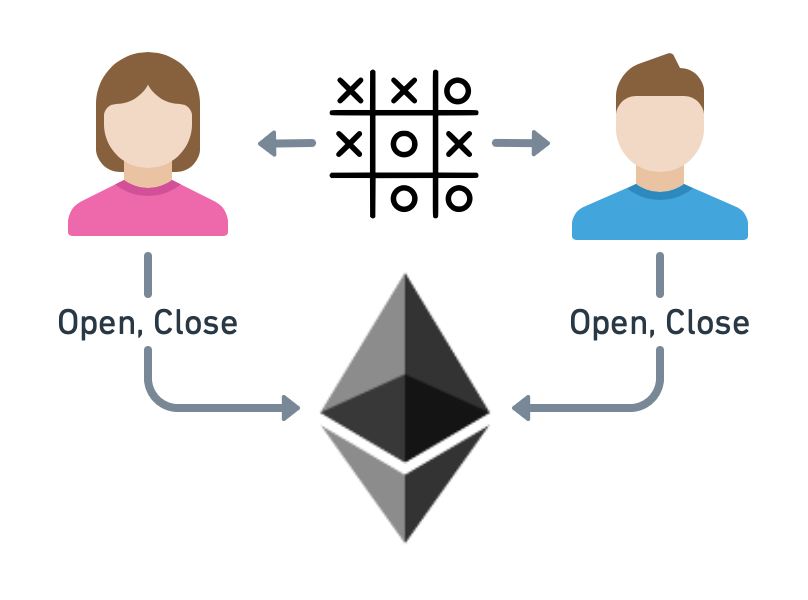Introduction
Usually, decentralized applications (dApps) are deployed as smart contracts, e.g., on the Ethereum blockchain. On-chain interaction with these can be pretty expensive. Even more costly than simple payment transactions because app-associated data is required. But their use case is vast because dApps define application-specific state transformations and win conditions that protect against fraudulent behavior (if the dApp is implemented correctly, of course).
In this tutorial, we want to share a blueprint of using go-perun, similar to the payment channels, for so-called “app channels” to perform interactions with a Tic-Tac-Toe dApp efficiently off-chain. Alice and Bob have an on-chain connection to an Ethereum blockchain and a direct link to each other for operating their app channel. They decided to play Tic-Tac-Toe for a certain amount of money. The parties can make alternating moves until one party wins. The winning party is rewarded with the funds the opposite party put into the app channel.

Tip
These app channels are more advanced than the payment channel example but build on many of the same concepts. Therefore, it is recommended to take a look at the payment channel example before continuing as we reuse a lot of code & logic.
Dependencies
The dependencies remain unchanged from the payment channel tutorial. Have a look at the description there if you did not already do so. Additionally, a basic knowledge of Solidity will be helpful for parts of this tutorial. This tutorial’s source code is available at perun-examples/app-channel.
# Download repository.
git clone https://github.com/perun-network/perun-examples.git
cd perun-examples/app-channel
Attention
We use context.TODO() and panic(err) throughout the tutorial to keep the code simple. In production code, one should always initialize the context and handle errors properly.